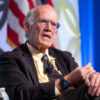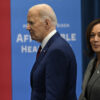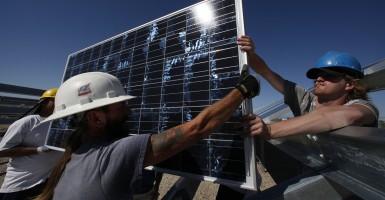A new report released by the Minnesota Commerce Department lays the technical groundwork for ramping up one of the nation’s highest state renewable energy mandates from 30 to 40 percent by 2030.
One technicality left out of the $750,000 study underwritten by Minnesota utility ratepayers: Who pays for what in a potentially massive upgrade of high-voltage transmission lines from the Dakotas to Indiana.
“The results indicate that Minnesota’s renewable energy standard is clearly on track and that the capacity for adding additional wind and solar up to 40 percent by 2030 can be reliably accommodated by the electric power system,” according to a Minnesota Commerce Department news release.
A search of the 178-page report shows the authors never mention ratepayers, leaving unanswered whether spending nearly $400 million to upgrade the grid would be a good investment for Minnesota consumers and employers.
“It doesn’t say it would be cost effective to upgrade the system to accommodate 40 percent renewables. It doesn’t say it would be a good idea,” said Bill Glahn, an independent energy analyst for Piedmont Consulting and an energy official in the administration of former Gov. Tim Pawlenty. “It just said that given enough time and money, it’s technically feasible. I could have told you that.”
Critics say the state got it backwards, generating a technical report at ratepayers’ expense for an energy policy that doesn’t yet exist and may not be economically feasible.
“They should be asking whether it’s a good idea before they spend money on figuring out how to get it done,” said Glahn. “And with consumers and employers in the state already trying to figure out how they’re going to pay their energy bills, even the study money could have been better used elsewhere.”
To reach higher levels of renewable energy on the power grid, investment would need to increase exponentially. The report estimates a cost of more than $2.5 billion to upgrade transmission systems to accommodate a 50 percent renewable energy mandate in Minnesota.






























